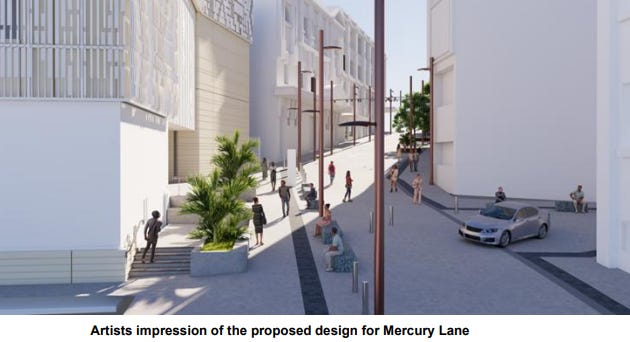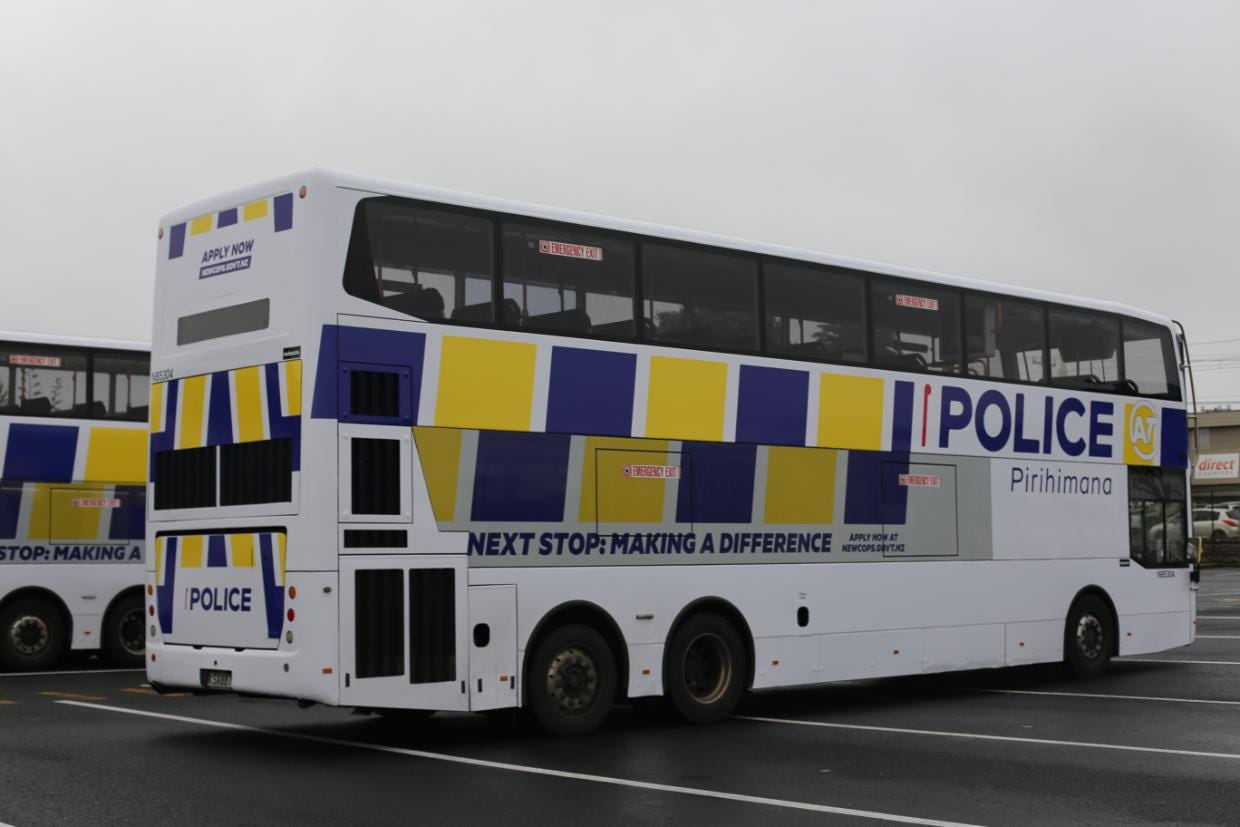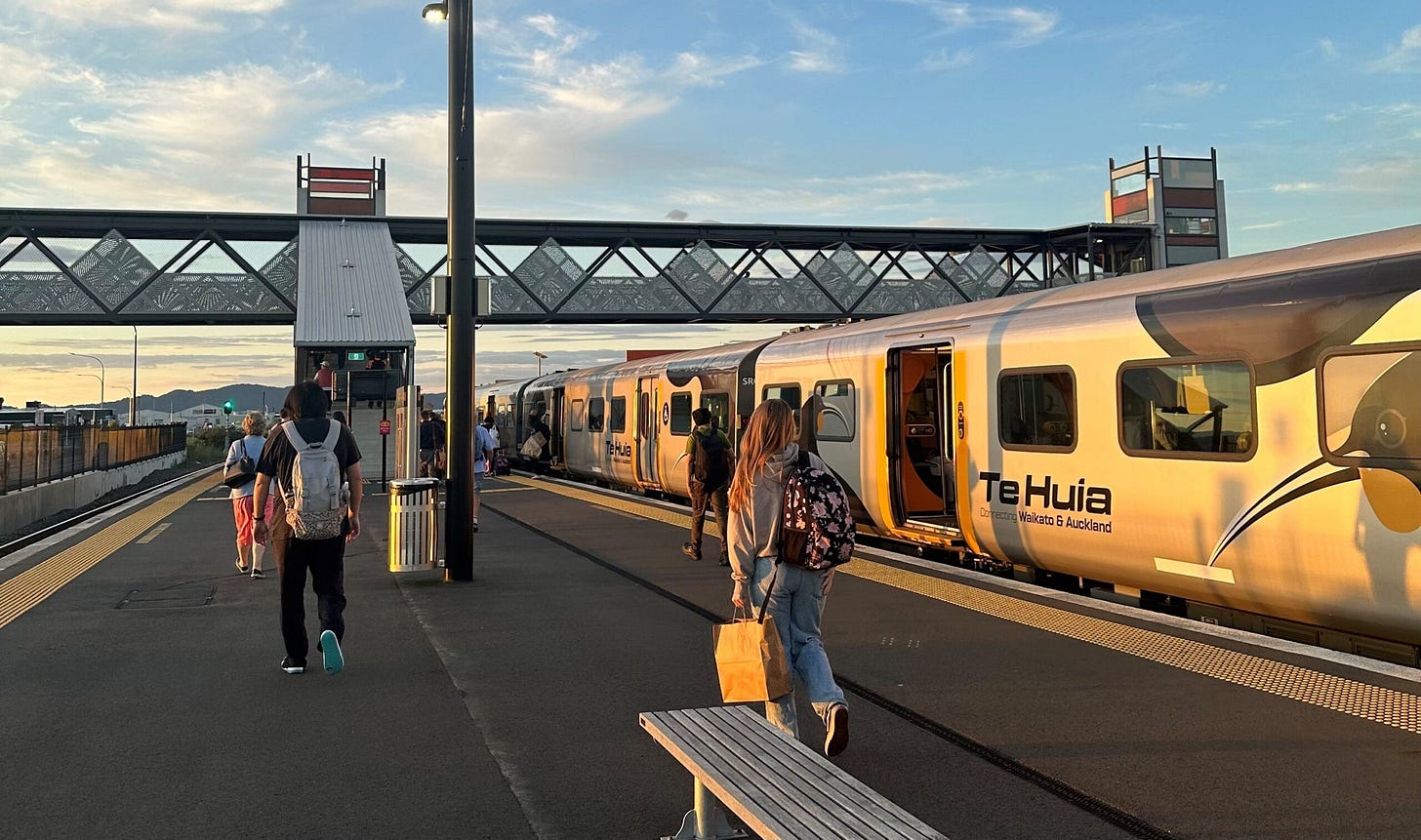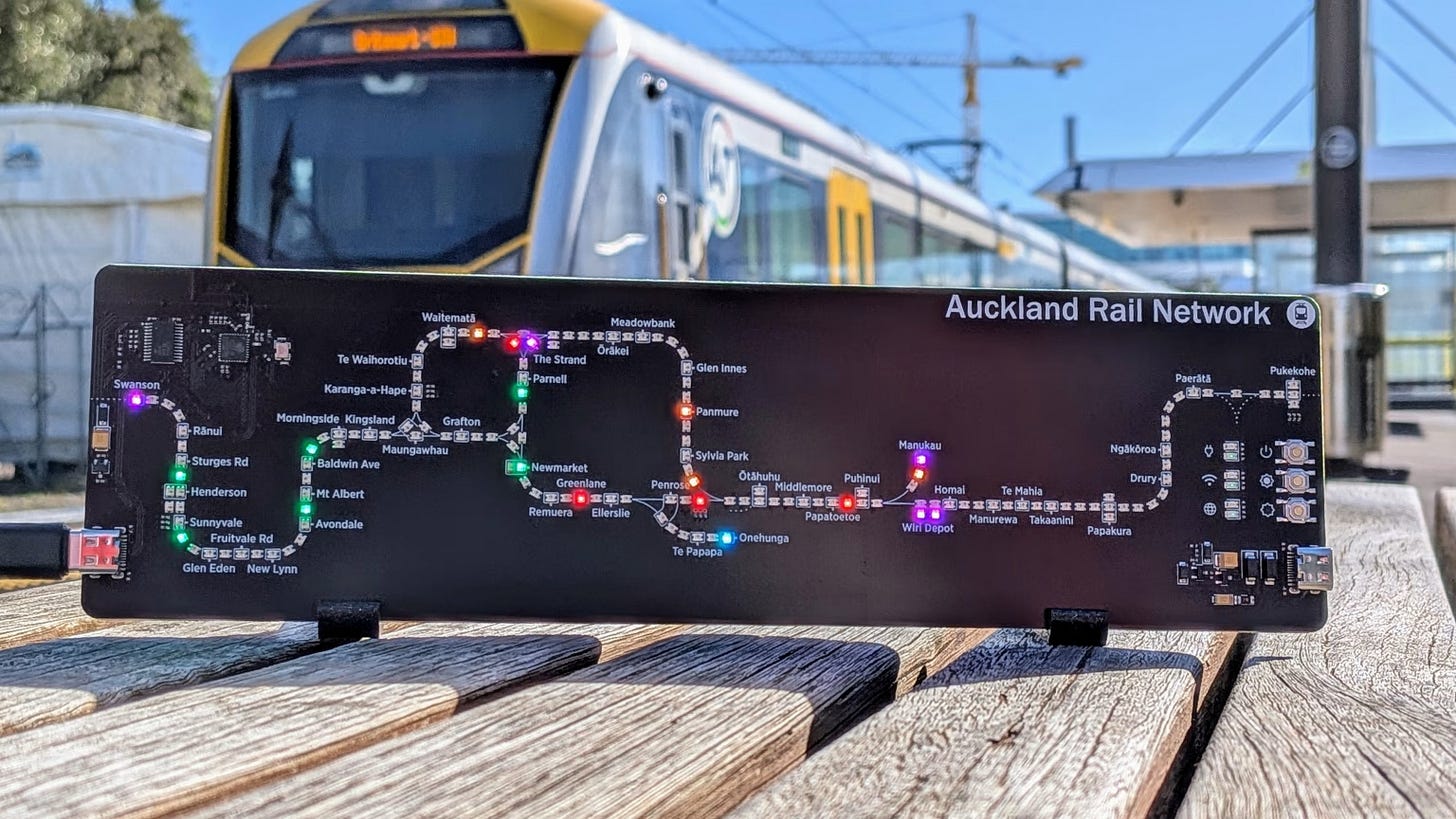It's Friday again so here's some of the things that caught our attention this week.
This Week in Greater Auckland
On Monday Connor looked at the new plans for the streets around the Mercury Lane entrance to Karanga-a-Hape station
For Tuesday we had another guest post from Brendon Harre, looking at transport in Christchurch pre the 1930s
On Wednesday Patrick covered the recently released report looking at the State of the City.
This post, like all our work, is brought to you by the Greater Auckland crew and made possible by generous donations from our readers and fans. If you’d like to support our work, you can join our circle of supporters here, or support us on Substack!
Project K Endorsed
As a follow on from Connor's post on Monday, on Tuesday the Waitemata Local Board endorsed the Project K design and AT have confirmed it will be delivered.
Auckland Transport has found a way forward for plans to improve the area surrounding the new Karanga-a-Hape Station – a key part of the transformational City Rail Link project.
It will ensure the thousands of people expected to use the station each day will find the surrounding streets easy, safe and welcoming to move through, while also allowing for future growth and development.
The design of the Karanga-a-Hape Station Precinct Integration Project was revisited after an updated plan shared with the the Waitematā Local Board in April 2025 raised some concerns.
It led to calls by key stakeholders for AT to reverse proposed design amendments and reinstate certain features.
.....
“The changes more closely mirror an earlier Auckland Transport design which prioritises walking, cycling and pedestrianised areas, while still improving access for service and delivery – retaining loading spaces in areas where we’ve heard they are important.
“The best part about an engaged community is that we understand the full range of views. There have been a few compromises on some elements, such as keeping the one-way traffic lane on East Street, and on the approach to upper Mercury Lane.”
.....
The Waitematā Local Board has now accepted the recommendations which included:
Mercury Lane: Upper Mercury Lane will operate as a pedestrian space with vehicle use only permitted for access to buildings on the lane (including e.g. emergency services, residents, maintenance/construction). This will be actioned as a pilot ‘traffic filter’ scheme for up to two years – with the opportunity for local input before being made permanent. Electronic bollards are being installed that can be lowered by authorised users.
Cross Street: retaining the loading spaces required by local businesses but adding footpaths through a boardwalk design, adding further traffic calming at the Upper Queen Street entrance, adding more lighting, and replacing some paid parking spaces with loading spaces at the eastern end of the street.
East Street: retaining the existing bi-directional cycleway and the single-lane northbound for vehicles, with devices to prevent vehicle use of the cycleway, and retaining the raised table pedestrian crossing linking to the new station access laneway.
Our understanding is Chair Genevieve Sage and the three City Vision members on the board supported the design, with the C&R aligned candidates opposing the change with their strongest opposition being to bollards on Mercury Lane. The design was also opposed by Waitemata Councilor Mike Lee.
Also, thank you to everyone who emailed the local board members, as well as those who emailed AT to thank them for doing a good job fixing this. It certainly made a difference.
Public Transport Advertising
AT have, over multiple attempts, been looking to consolidate it's advertising on public transport into a single contract. They've now announced the results of that.
Auckland Transport (AT) has entered into a new partnership with MediaWorks that will help keep public transport affordable by unlocking the full potential of advertising assets across the transport network.
AT has awarded MediaWorks a ten-year contract to manage the full portfolio of about 2,000 advertising assets across AT’s network – ranging from bus shelters and bus wrap advertising to display screens at public transport stations.
“We are thrilled to announce our partnership with MediaWorks to manage what is New Zealand’s largest out-of-home asset portfolio, following a very competitive process,” says AT Chief Financial Officer Mark Laing.
“The out-of-home media industry is experiencing exciting growth and MediaWorks’ proposal demonstrated strong delivery capability and alignment with AT’s strategic objectives.”
Revenue boost to offset public transport costs
Mr Laing says the partnership with MediaWorks will deliver a substantial increase in advertising revenues and is an excellent outcome for ratepayers.
“Under the new agreement AT expects to receive a minimum of $220 million revenue over the next ten years. Revenue will be higher than this if the market continues to grow as forecast.”
AT currently receives around a quarter of the gross advertising revenue generated from its Out of Home media assets. Under this new partnership AT will receive more than half.
“Last year AT earned $7 million in advertising revenue. This coming year this will more than double,” says Mr Laing.
“Every additional dollar brought in through advertisements across the public transport network helps to offset the costs of operating our services and gets Auckland closer to meeting the Government’s ‘private share’ targets for public transport.
MediaWorks are already involved with advertising on public transport
“MediaWorks has delivered numerous high profile client campaigns across our public transport assets over the past few years that have captured headlines and captivated our customers.
“Whether it’s the ‘Barbie bus’ or the fleet of Police recruitment buses and trains patrolling our city, unique advertising on our public transport network has created huge cut through and been a hit with our customers whilst bringing excitement to our public transport network,” Mr Soulsby says.
Could Fullers be sold
There has been a lot of changes to ferries in Auckland recently, with AT taking over the ownership of the vessels and incorporating Devonport properly into the network, as opposed before where it was controlled by Fullers. Now it appears Fullers might be for sale
It is being reported that Auckland’s main ferry provider could be sold.
The Australian is reporting the UK owner of Fullers 360 is considering selling the ferry company and that investment bank Cameron Partners would be handling the sale.
The company was bought by private equity firm Souter Investments in 2009 when it was Fullers Group Ltd.
Fullers 360 was formed in 2017 when Fullers Group Ltd merged with another ferry company, 360 Discovery Ltd.
In a statement to Stuff, the company was quick to dampen speculation around a possible sale, with a Fullers 360 spokesperson saying they “do not” comment on “market speculation” about the plans of their owner.
.....
The NBR has also reported that the company has faced a series of steep losses in recent years, including a $1.2m net loss for the year to March 2024 and a $4.3m loss for the prior year.
There has also been a concerted push, including by Auckland Central MP Chlöe Swarbrick, to remove the company's exemption from the Public Transport Operating Model.
A Sunday Te Huia
The Te Huia train between Auckland and Hamilton is to finally add a Sunday service.
Te Huia’s long-anticipated Sunday rail service between Waikato and Auckland has received final approval and is officially set to begin later this month.
The first Sunday train will depart Hamilton’s Frankton station at 2.45pm on Sunday, July 27, arriving at Auckland’s central Strand station at 5.17pm.
The return journey will leave Auckland at 6.15pm, with passengers back in Hamilton by 8.37pm.
With the launch now confirmed, the Sunday service means Te Huia will offer seven-day-a-week rail travel between Hamilton and Auckland.
The addition of a Sunday service marks a milestone for the inter-regional rail connection, which is entering the final year of its trial.
Great Gift Idea
This map uses AT's real time feed to create a map of the network to show where trains are.
Strong Towns in NZ
Charles Marohn from Strong Towns was in New Zealand recently to speak at the recent Looking Ahead Infrastructure Symposium which launched the Infrastructure Commission's draft National Infrastructure Plan. He's written about some observations he had and the conversation he didn't expect here.
I came prepared to be curious. I expected to find a radically different place, shaped by its own geography, politics, and history. And in many ways, the parts of New Zealand I experienced were that. But the more I listened, the more I spoke with people, the more I realized: The problems they’re facing—the ones keeping local leaders awake at night—are strikingly, painfully familiar.
When I got up to speak, I opened with a disclaimer: “I’m going to talk about the United States because that’s the context I know. Please feel free to tell me afterward how different it is here.” And then I started talking about our struggles: cities that can’t maintain their roads, water systems failing in places big and small, development that doesn’t pay for itself yet is locked into place by outdated regulations that make adaptation nearly impossible, and the quiet bankruptcy creeping up on communities that built too much, too fast, without doing the math.
When I finished, people lined up to talk. Not to argue. But to say, “That’s us, too.”
More Trees Please
An article from earlier in the month highlighted a recent report on tree coverage in New Zealand towns and cities. The article is focused on Canterbury (and another article more specifically about Rolleston) but contains some useful information for other cities too.
Picton’s canopy is estimated to cover 58.9% of the town’s area, according to a new report by Professor Justin Morgenroth and Dr Ning Ye of the University of Canterbury’s School of Forestry.
Christchurch’s canopy was 13.6%, putting it the 57th largest by percentage in the country.
The lowest canopy percentage was found in Hāwera in Taranaki, at 7.5%.
Rolleston’s canopy cover was 7.9% (ranked 77th out of 78 cities and towns), Kaiapoi’s was 11.8% (66th), Rangiora 9.5% (74th) and Ashburton was 11.5% (69th).
.....
Research has shown that for every $1 invested in urban trees, they return $3.39 of benefits.
“Simply put, cities that invest in tree canopy cover provide residents and businesses with more benefits,” it said
The new report assessed 75 urban centres with some funding from Te Uru Rākau New Zealand Forest Service.
Christchurch, Wellington and Auckland were also included in the report, based on previously analysed data.
Wellington’s canopy covers 30.6%, the greatest of the three major centres, and ranking it 10th. Auckland has 18%, putting it 30th.
Planting more trees will have greater benefits than the government's massive motorway building plan. Let's get planting
And how about an urban focused version of this initiative.
Auckland Council says there was a large amount of interest for its first-ever sustainability-linked bond, which raised $250 million from institutional investors recently.
.....
In this case, the funding is linked to one million native trees across Auckland’s regional parks by the end of 2027, paid for with funding already put aside in the council’s 2021 long-term plan for 200 hectares of new ngahere (native bush or forest) on park land.
A Chilling Effect
David Seymour's Regulatory Standards Bill is in the news a lot recently with almost universal opposition to it from experts. An opinion piece about it this week from Jonathan Boston, emeritus professor of public policy at Victoria University of Wellington, included a transport angle.
Next, suppose you are a lawyer in the Ministry of Transport. Your minister has asked you whether there are any provisions in the Land Transport (Road User) Rule 2004 that are inconsistent with the principles in the Regulatory Standards Act. In response, you note that a key provision in this rule is for drivers to keep to the left: “A driver, when driving, must at all times drive as near as practicable to the left side of the roadway unless this rule otherwise provides.”
Unfortunately, this rule is probably inconsistent with the Regulatory Standards Act. For instance, it contains no principle to protect public safety or pursue the common good. Moreover, the act’s liberties principle severely constrains the justifiable grounds for state intervention. Hence, if the act’s provisions had legal force and were applied rigorously, road users would likely be free to drive on whichever side of the road they choose and at whatever speed. You advise the Minister of Transport that this might be unwise.
How about that weather
If you think it's been an incredibly wet winter, you're not wrong. After getting close to needing water restrictions again during the first quarter of the year, 2025 is now the fourth wettest year of the last decade.
And so many records too
Low Traffic Neighbourhoods Save Lives
A study published this week has revealed that London’s LTNs have cut road injuries and deaths by more than a third within their boundaries in the last twelve years, without increasing casualties on nearby roads.
Academics compared road collision statistics between areas with LTNs and those without over time, and found that 600 road injuries, including 100 involving death or serious injury, could have been prevented if LTNs had been in place. That’s the equivalent of an entire year’s worth of road casualties in London.
The numbers speak for themselves: supporting LTNs isn’t anti-motorist, it’s pro-life.
The efficacy of the measure can no longer be credibly questioned, so it’s time we started implementing them across London and at pace. With so many lives at stake we cannot afford not to.
Have a great weekend.








